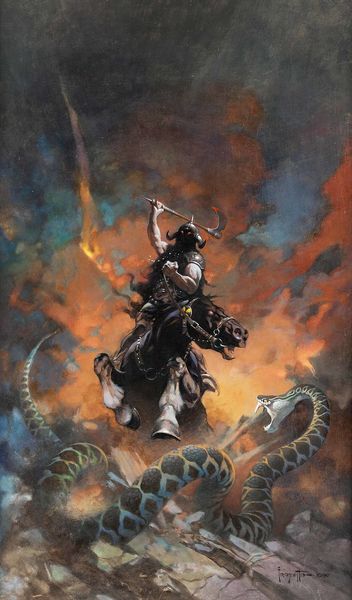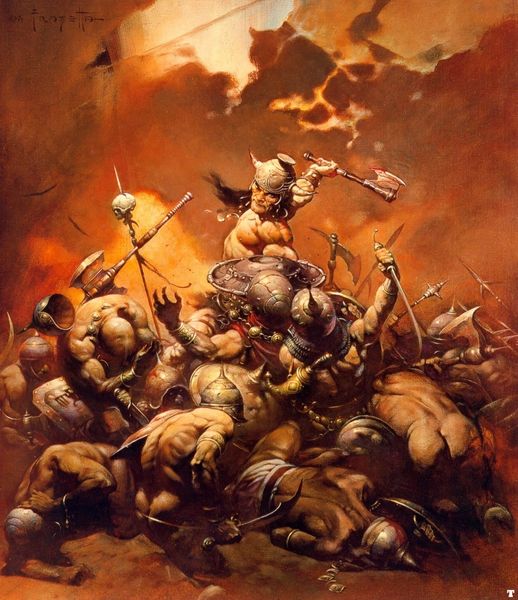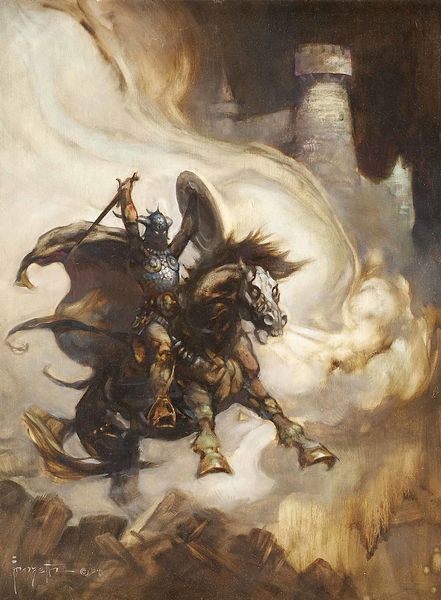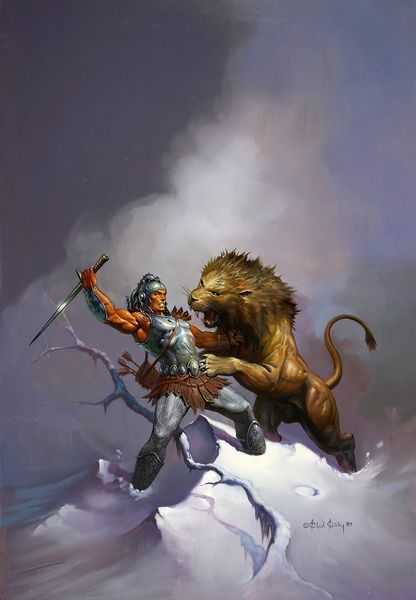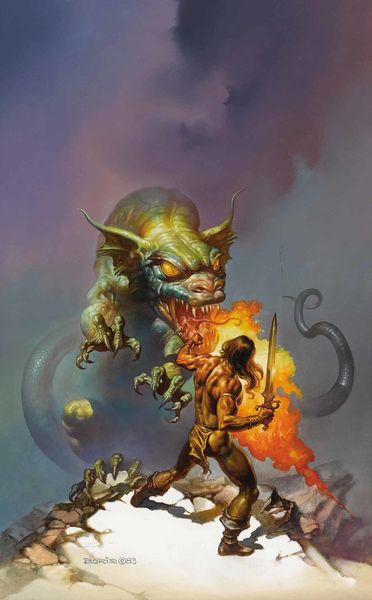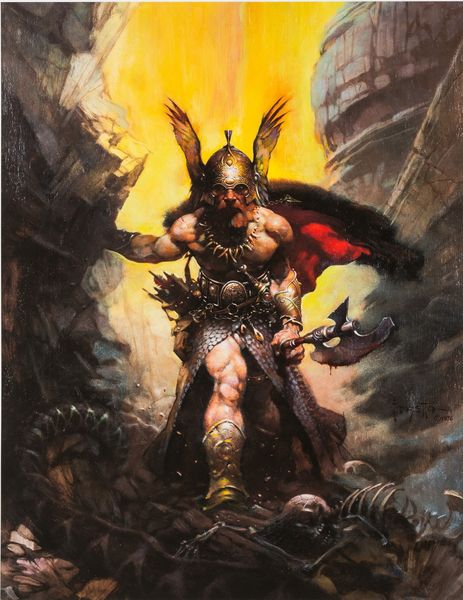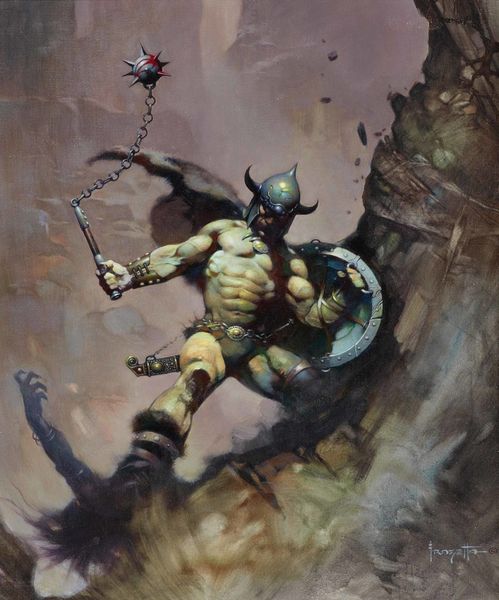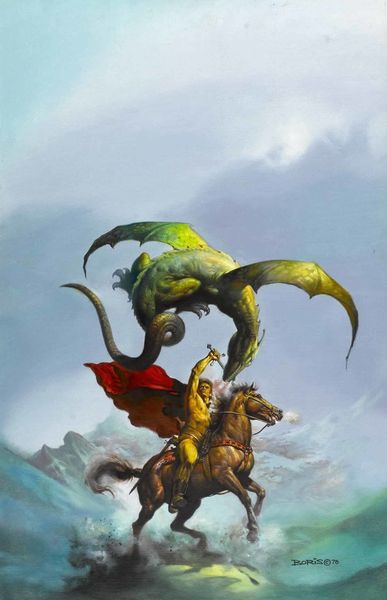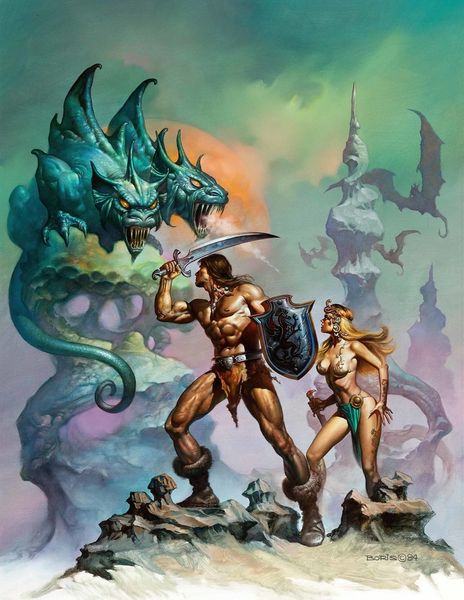
painting, oil-paint
#
fantasy art
#
painting
#
oil-paint
#
fantasy-art
#
figuration
#
history-painting
#
surrealist
#
portrait art
Copyright: Modern Artists: Artvee
Curator: This piece is titled "Cormac Mac Art; The Robert E. Howard Library #1 Paperback Cover" created by Ken Kelly in 1994, using oil paint. What's your initial take? Editor: Violent! The figures are so aggressively posed. I can practically smell the sweat and iron. It looks almost performative, like it’s staged for maximum impact, even if its ultimately destined to be pulped and binned. Curator: Absolutely. Kelly's painting catered to a market hungry for escapism. Robert E. Howard, of course, was the creator of Conan the Barbarian and a major influence on the sword and sorcery genre. This imagery, which uses very strong and vivid depiction, romanticizes hyper-masculinity and brutal, historicizing conflict. Editor: Romanticizing certainly is at the fore here. Just look at the central figure, Cormac: muscles bulging, helmet gleaming... There is a hyperreal quality that seems a step above similar pulp fiction illustrators of the time. And that's interesting. What kind of techniques elevated this beyond standard cover art? Curator: It's the blending of historical references with pure fantasy that gives it weight. Notice the dragon-headed longboat. The inclusion places the conflict within the realm of Viking sagas. But Kelly wasn't simply copying historical sources. His figures strike dynamic poses that owe more to classical sculpture, a tradition from the museum now repackaged for the mass market. Editor: So, you're saying it's borrowing tropes from fine art painting to elevate what is, at the end of the day, disposable mass media. What does that mean for the status of the art? Can it simply be both a piece of entertainment *and* valid historical and/or artistic statement? Curator: The function of images shifts constantly depending on historical conditions, distribution, and spectatorship. While it initially served to sell a product—a paperback novel—its themes and visual language tapped into deeper currents of mythology and national identity and cultural power. Ultimately that’s part of what it continues to reflect in its position on our walls. Editor: A clever synthesis, repurposing the imagery of conquest into something saleable. Makes you wonder who truly benefited from these muscular heroes and clashing steel... It’s a fascinating piece to think about what has, and hasn’t, changed between then and now in pulp imaginings of historic power. Curator: Indeed, seeing such dynamic and historically loaded work should incite those important thoughts in viewers, particularly related to its themes of violence.
Comments
No comments
Be the first to comment and join the conversation on the ultimate creative platform.
